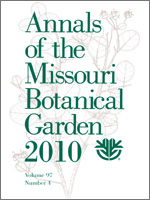This paper reviews monocot flower structure and gynoecium development and evaluates these data to clarify the evolutionary history of the monocot flower. Despite some congruence between molecular and morphological data regarding the delimitation and phylogenetic relationships of monocots, there is currently no universally accepted view on the morphology of the ancestral monocot flower, reflecting a high degree of parallelism in monocot floral evolution. We focus on two character suites that encompass the key features of monocot flowers: (1) the typical monocot groundplan of trimerous-pentacyclic flowers, and (2) a character suite related to carpel fusion, including postgenital fusion between carpels and the presence of septal nectaries. It is likely that the trimerous-pentacyclic flower represents a major synapomorphy of monocots; this flower groundplan is virtually absent from the closest relatives of monocots. Such close correlation of a particular groundplan with a phylogenetic group is analogous with the absence of the typical eudicot flower groundplan in basal eudicots, though in both instances the underlying constraints are obscure. In monocots, morphogenetic studies and analysis of character correlations lead us to favor a hypothesis that the ancestral monocot conditions were postgenital fusion between carpels and presence of septal (gynopleural) nectaries. This character-suite optimization contrasts with optimizations of individual morphological characters, which suggest that the ancestral monocot flower possessed congenitally united carpels (with no contribution of postgenital fusion) and lacked septal nectaries. Among extant early divergent monocots, flowers of Japonolirion Nakai (Petrosaviaceae s.l. or Japonoliriaceae, Petrosaviales) appear to most closely resemble those of the ancestral monocots. A gynoecium with free carpels represents a derived condition in monocots; it evolved independently in three unrelated groups (Triuridaceae, Arecaceae, Alismatales), with several gains of apocarpy in Alismatales and palms. All three monocot groups that include free-carpellate species show significant variation in their individual floral groundplans.
BioOne.org will be down briefly for maintenance on 14 May 2025 between 18:00-22:00 Pacific Time US. We apologize for any inconvenience.
How to translate text using browser tools
27 December 2010
Evolutionary History of the Monocot Flower
Margarita V. Remizowa,
Dmitry D. Sokoloff,
P. J. Rudall
ACCESS THE FULL ARTICLE
Apocarpy
congenital fusion
flower evolution
monocotyledon
postgenital fusion
septal nectary
syncarpy





